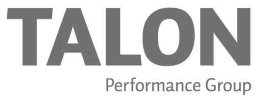How to work smarter, better, and get things done faster
Time is a non-renewable resource, and as such, one of the most precious ones we have.
As a lawyer, executive, and a professional, you’re probably wearing multiple hats in your effort to get everything done. However, wearing all those hats makes it incredibly easy to get distracted, lose focus, and waste valuable time on things that are not mission-critical. Here are ten tips to help you stay on track.
1. 80% is good enough and still better than most. Remember this key phrase from Sheryl Sandberg: Done is better than perfect. As a driven leader, you’re likely a perfectionist, which means that you might be getting in your own way. Remember that not every activity carries the same value or weight. Focus on turning out results by giving yourself deadlines according to the value of the activity and sticking to them.
2. Live by High Value Activities. Resolve to never have another day that ends with you saying, “I didn’t get anything done today.” Plan the three most important things you can do each day to make the biggest impact on your business, and then be willing to make changes in your schedule to ensure you do those three things first or as early as possible in the day. Once those three things are done, you can give attention to the other items on your to-do list, handle the interruptions, and attend meetings– and you will still leave the day knowing you accomplished something.
3. Schedule ALL Action Items into Your Calendar. Don’t wait until you “have time” to complete important things. You will never have that “time” you are waiting for. If you have empty or “free” spaces in your calendar, people will fill them (either you or someone else). Just like water, unimportant activities will expand to fill the available space. Block off time in your calendar for research, preparation, working out, and travel time– and then just follow your day.
4. Don’t Multitask. Many studies show that multitasking is ineffective. (Take my word for that–you don’t have time to go look it up!) You will be more efficient and productive if you focus on one thing at a time. Give your tasks a measurement of time, quantity or dollars. Then tackle that one item for the measure you assigned. Be sure to communicate through your calendar, a sign on your door, an auto email message, or the do not disturb button on your phone to let people know when you are (and are not) available so they too can self-manage and know what to expect.
5. Delegate everything that is outside your Strength Areas. Focus your time and energy on profitable activities. Surround yourself with people who are smarter, better, faster, and more experienced than you, and then delegate to them! You’ll be glad you did.
6. Block out your schedule in chunks or by the day. Monday is my admin and business-building day–it makes it easy for me to know where I need to focus and what is most critical for me to do that day. I don’t have to think about it, or wonder when I’ll get other things done. Those other things all have their places in my business and in my week. You can easily do the same by “chunking out” your schedule.
7. Save time-draining activities for the end of the day. You know your personal time-drains: social media, email, etc. Whatever wastes your time the most (but still needs to be done) should be done at the end of the day. This way, you’re not wasting valuable, productive time on things that are not profitable, important, or need your full brain power.
8. If you’re really stuck on something, take action. When you’re not making progress, take action by moving on, letting the stubborn item rest, or getting help. Stop banging your head against the wall. Giving yourself some space often provides a much-needed different perspective. If possible, let it sit and do something else – ideally something physical or in nature (i.e., a walk outside). If a new perspective doesn’t arrive, seek the guidance of a valued advisor.
9. Hire a coach or mentor to keep you accountable. A good coach or mentor will keep you accountable, provide support where you need it, and help you see when and how you’re sabotaging yourself. We all need help, and none of us can evaluate ourselves with perfect objectivity. Hire someone you trust who will hold your hand AND give you tough advice when you need it. Both are necessary.
10. Establish a regular schedule for yourself based on your body’s natural rhythms. You have to take care of yourself physically as well as emotionally, mentally, and spiritually. If you don’t, you won’t be nearly as good at everything else you do. Establish and adhere to regular exercise, meditation and fun times that feel right for you and your schedule – your productivity and happiness will soar.
To get started, just pick one or two tips above to incorporate into your routine. Once a habit is formed that is working to save you time, come back to this list to see if there is anything else you can incorporate to save you time, work smarter and get things done faster.
